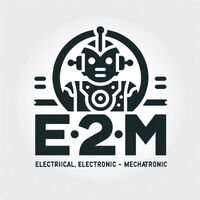0.96 inch 4 pin OLED Display
SKU OLD4P096
$2.50
In stock
1
0.96 inch 4 pin OLED Display
Product Details
- Display Size: The diagonal measurement of the screen is 0.96 inches, which makes it quite compact and suitable for applications where space is limited, such as wearable devices, small handheld devices, and embedded systems.
- Resolution: Despite its small size, these OLED displays often feature a respectable resolution, providing clear and sharp images. Common resolutions for a 0.96-inch OLED are 128x64 pixels, allowing for detailed graphics and text.
- 4-Pin Interface: The 4-pin interface typically includes power (VCC), ground (GND), data in (SDA), and clock (SCL) lines. This configuration suggests that the display uses I²C (Inter-Integrated Circuit) communication, a two-wire serial protocol that simplifies connection to microcontrollers and reduces the number of pins required for operation.
- OLED Technology: OLED displays emit light through organic compounds that illuminate when an electric current is applied. This technology allows for high contrast ratios, as each pixel generates its own light, enabling true blacks and high-quality color reproduction where applicable.
- Wide Viewing Angle: OLED displays are known for their wide viewing angles, typically up to 160 degrees, allowing the display to be easily readable from various angles without significant color shift or contrast loss.
- Low Power Consumption: OLED technology is energy efficient, especially in displays showing a lot of black, as pixels not in use remain off. This feature makes it particularly suited for battery-powered devices where power conservation is critical.
- High Contrast: The ability of OLED pixels to completely turn off achieves excellent contrast ratios, making text and images stand out vividly against the background, enhancing readability and visual appeal.
- Fast Response Time: OLED displays have a very fast response time compared to traditional LCDs, which makes them ideal for applications requiring quick visual feedback, such as dynamic user interfaces or applications displaying moving images.
- Versatility and Customizability: These displays can be used in a wide range of applications, from simple indicators and status displays to more complex interfaces with graphics and animations. Many libraries and examples are available for major development platforms, making programming and customization relatively straightforward.
Display prices in:USD

